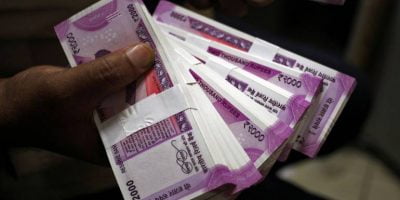
Last week Prime Minister Narendra Modi joined the ongoing rhetorical debate on the state of the Indian economy with a strong defence of his government’s actions over the last three years. Among other things, his intervention put the spotlight on the Indian economy—something long overdue, but not for the rhetorical charges that are being flung around on both sides.
If indeed there is a pithy way of summarizing the state of affairs suffice to say that the country’s economy has transitioned from a state of policy paralysis (which identified the Congress-led United Progressive Alliance or UPA) to one of investment paralysis.
Both are cause for worry but for entirely different reasons. One was the outcome of a government which, for whatever reasons, went into a policy funk with disastrous consequences.
The other is the result of structural disruptions—some of which, like spiralling bad loans with banks, are a legacy of the UPA regime and a few induced by policy changes, like the rollout of the goods and services tax (GST) and demonetization of high value currencies, undertaken over the last three years.
So while one arose from inaction, the other is largely a fallout of not anticipating or reacting in time to address the disruptions arising from hitting the reset button on the economy.
It is important to grasp this distinction. Alternatively, there is a risk of being overwhelmed by the rhetorical claims and counterclaims on the economy; and missing the woods for the trees as it were.
As such the economy is not doing as badly as the opposition is claiming—especially with almost every agency forecasting a rebound in economic growth, albeit marginal, in subsequent quarters. Most importantly, macroeconomic stability has been restored. On the other hand, it is certainly not performing to potential—which some argue is around 8-8.5%—as the government’s spin doctors are arguing.
This potential can be tapped only if the investment levels, which have dropped to worrisome lows, recover. But this is easier said than done. The legacy of bad debts or what Arvind Subramanian, chief economic adviser, describes as the twin balance sheet problem (because it affects the books of both companies and the banks who extended the loans) is not something that can be resolved overnight.
Alongside the disruptions caused by structural policy responses like GST are causing considerable pain. As the old business structures built over seven decades are replaced, rather abruptly in some cases, the new systems are not up and ready to take over—indeed, execution of ideas is where this government has erred. It is the fallout of this transition, which is lending hope to critics and a cause for worry to the government.
In a column published in Mint last week, Indira Rajaraman, alluded to this phenomenon very succinctly. According to her, GST has completely recast the existing risk-sharing mechanism, dealing a death blow to retail trade volumes. The solution, like Rajaraman argued, is not to backtrack on GST (as some political parties are suggesting), but instead to fix the anomaly through tweaks (one of which was accepted by the GST Council on Friday by putting in place quarterly filing of returns, instead of every month).
Similarly, the government’s anti-corruption initiatives are forcing a transition to a more transparent transactions framework—exactly why real estate, which thrived on unaccounted cash, is in such doldrums. Here too, the alternative framework has been slow to evolve and the government and other institutions like the Reserve Bank of India (RBI) are guilty of not pushing hard on walking the country through the required behavioural change.
The Economist Intelligence Unit in a note issued last week said as much.
“The deceleration in bank credit growth to industry is partly attributable to the RBI’s initiatives and the Bharatiya Janata Party’s efforts to reduce corruption at higher levels of business and government. However, the difficult business environment and slow-moving judicial system will make the transition to a more market-driven financial system extremely difficult,” and then added, “We believe that a revival in private investment depends on the government injecting additional capital to banks’ balance sheets, but also on companies readjusting their business models to the new financial system.”
In the final analysis, it can safely be said that the attention to the economy is welcome, but reducing it to a political blame game is not. And looking at a new and rapidly transforming India through a conventional lens is a bad idea.
The Union government, which has visibly begun its countdown to the 2019 general election as well as elections to key state assemblies like Gujarat, may be tempted to hit the panic button.
Even though politically expedient, it would be very myopic in terms of the long-term health of the Indian economy.
[“Source-livemint”]

